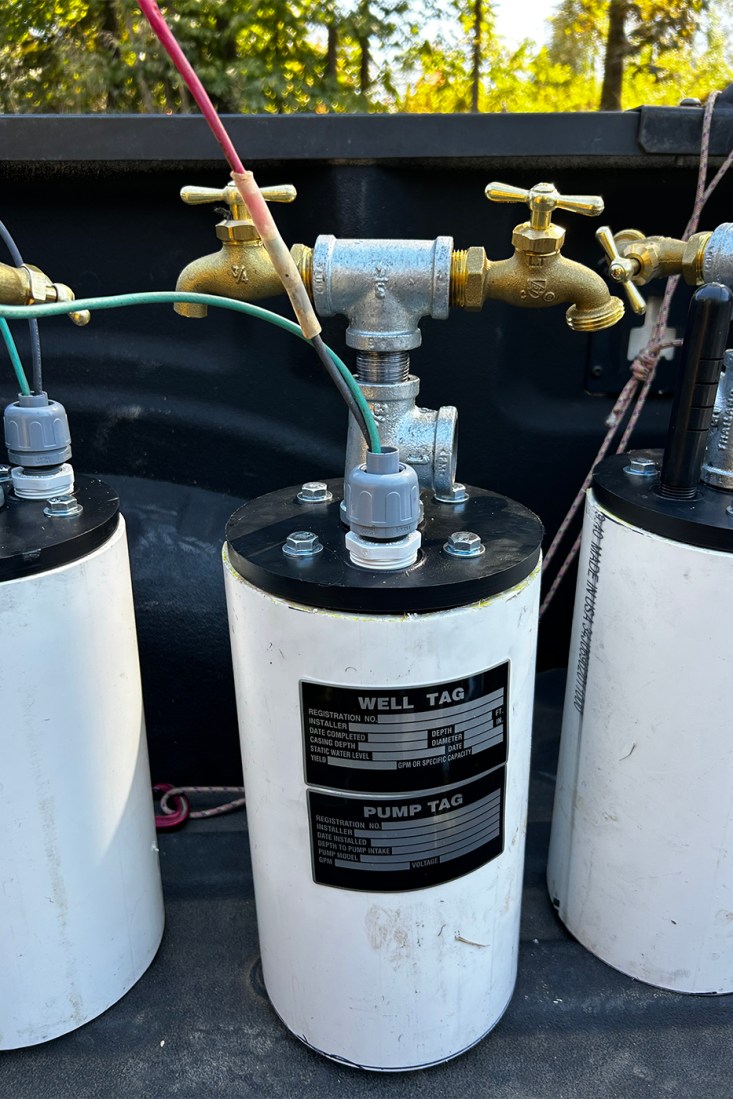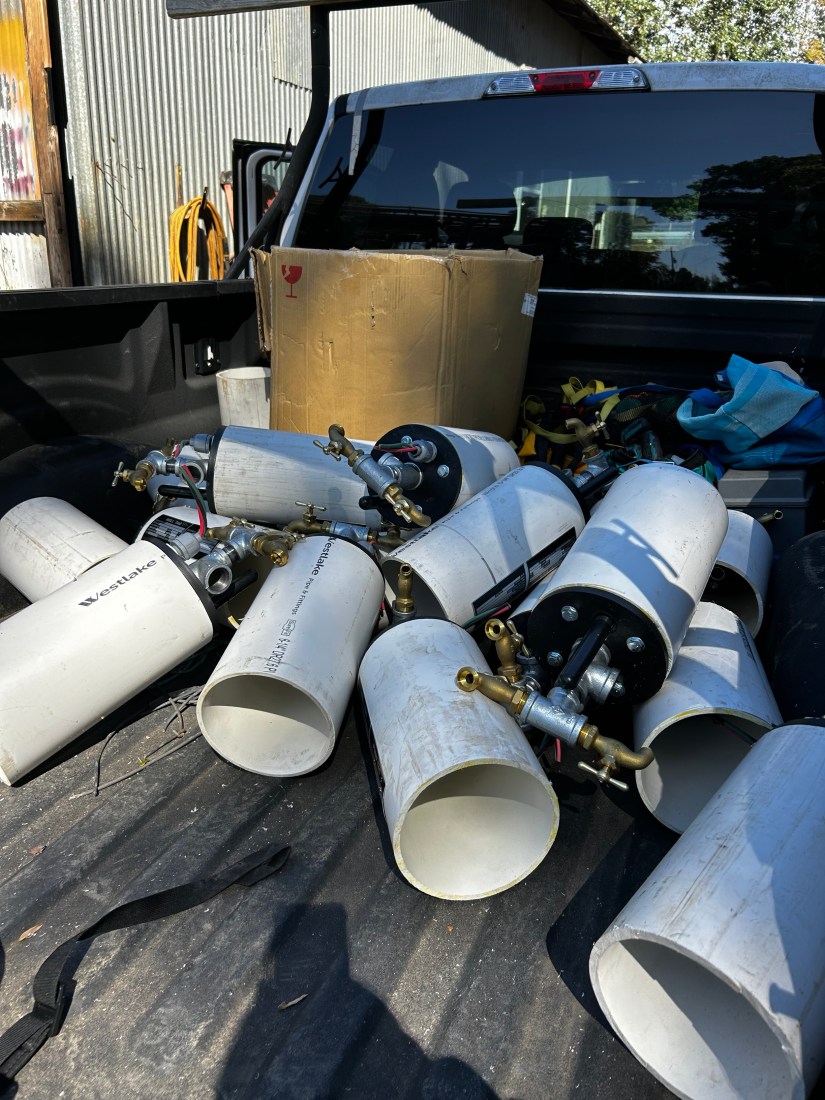Northeastern researchers give back. Partnership with North Carolina strengthens amid hurricane recovery
Professor Kelsey Pieper has been working with North Carolina health officials for years on research. When an unprecedented storm hit, she and her team saw a chance to help.

Hurricane Helene ravaged North Carolina, wiping out entire communities and leaving residents unprepared to deal with the aftermath of the unprecedented flooding.
For years before this, Northeastern assistant professor of civil and environmental engineering Kelsey Pieper, worked with health officials in North Carolina to conduct research on lead poisoning and well water quality. After years of the state aiding in her work, she and her team used this moment to give back.
Pieper and some of the students working under her, along with fellow professor Ed Beighley, created databases to help North Carolina officials determine what buildings and wells might have been affected by the storm. They also went to North Carolina to aid local departments in creating tools to educate residents on how to disinfect their wells.
“They don’t get flooding like this in the mountains, so the health departments didn’t know what to do, per say,” Pieper said. “We were helping out because we lean on the state a lot to … advance our research. This is the first major time that they were like ‘We have this problem’ and we were like ‘OK, let us help you.’ A lot of us are staying up late and volunteering hours because they’ve done so much for us, supporting our research.”


Pieper said she reached out to her contacts in North Carolina after Helene hit to see what they needed. The state was still figuring out the extent of the damage, so in the meantime, Beighley, a distinguished professor in civil and environmental engineering, and one of his Ph.D. students created a flood model to figure out the extent of the damage.
Beighley, whose research is also funded by NASA, uses remote sensing data products to do hydrologic studies, which includes flood mapping. Most of the data he uses are from satellites.
In this case, he used datasets tracking things like rainfall and used the National Weather Service’s national water model to look at the flow of the state’s rivers and the potential discharge from them. Beighley said he then uses that model and a mapping technique to make a custom flood map.
“We provided North Carolina Department of Health maps of where we thought the water would have gone,” he added. “We’re using rainfall to look for places where we think water quality might be impacted from surface flooding.”
Pieper’s team then overlaid this model with maps of the region with landmarks to see what wells, businesses and public buildings might’ve been impacted by flooding. Kyla Drewry, a third-year Ph.D. student studying environmental engineering, then streamlined this into a website people could use.
From this, the state was able to work with the teams to figure how each area was specifically affected.
“They knew we had these tools and resources,” Pieper said. “They would come to us and be like ‘We need to understand this’ and we’re like ‘All right, we’ll figure out how to do this for you.’ We have all the tools for this kind of thing.”
Editor’s Picks
Three weeks after the storm hit, Drewry and Cassidy King, a chemical and environmental engineering student who is doing a co-op in Pieper’s lab, flew to Charlotte to be part of the on-the-ground response. While there, they worked with local nonprofits and experts to figure out how best to build model wellheads that could be used to show residents how to disinfect their wells after the storm.
The duo then traveled to different local health departments to distribute these model wellheads. They made 25 wellheads in total and also made an infection protocol video that the state is now using to show residents how to disinfect their wells.
“Disinfection of water is done by professionals,” King said. “But because they can’t get to everyone, it’s starting to turn into the resident’s responsibility to disinfect their own drinking water. The problem with that is the resources that exist for residents don’t give a lot of information specific to your well. Part of this initiative was helping create updated resources for these communities and that included doing disinfection protocol.”
When they arrived in the affected region, the pair found many businesses were still shuttered, many places without power, and FEMA and the National Guard present with aid stations.
“What we saw with Helene was flooding in the western part of the state in the mountains near Asheville and Appalachia,” Drewry said. “Flooding from hurricanes in that area is not something they’re used to or prepared for, so that came as a surprise to us as well. We wanted to do whatever we could to help. … Our role was to listen and assist the state and local health departments in the communities to the best of our abilities. While we hope to get data and research moving forward, the primary goal was to provide assistance to those communities.
“That was really humbling and sad to see,” Drewry said. “We basically took a drive around the valley area and it was just piles of people’s stuff that they had like out on the curb because anything that got touched by those floodwaters you have to get rid of because mold becomes a major concern. There were just piles and piles of things outside.”
Pieper has also gone to Raleigh.
The problem now is recovering a lot of systems that were flooded during the storm and taken offline and educating people on how to test their wells and disinfect them if they were infected during the flooding. Pieper added they’re also starting to gather insights about what was learned from this event and what model can be adopted moving forward should another storm like this occur.
“It’s definitely going to be a long road to recovery,” Drewry added. “Listening to community needs and understanding when is the appropriate time to go down there and start doing sampling is half of it.”











